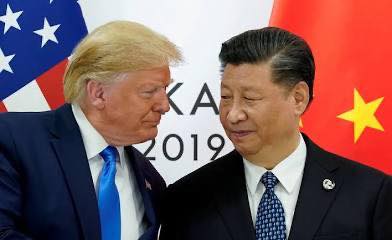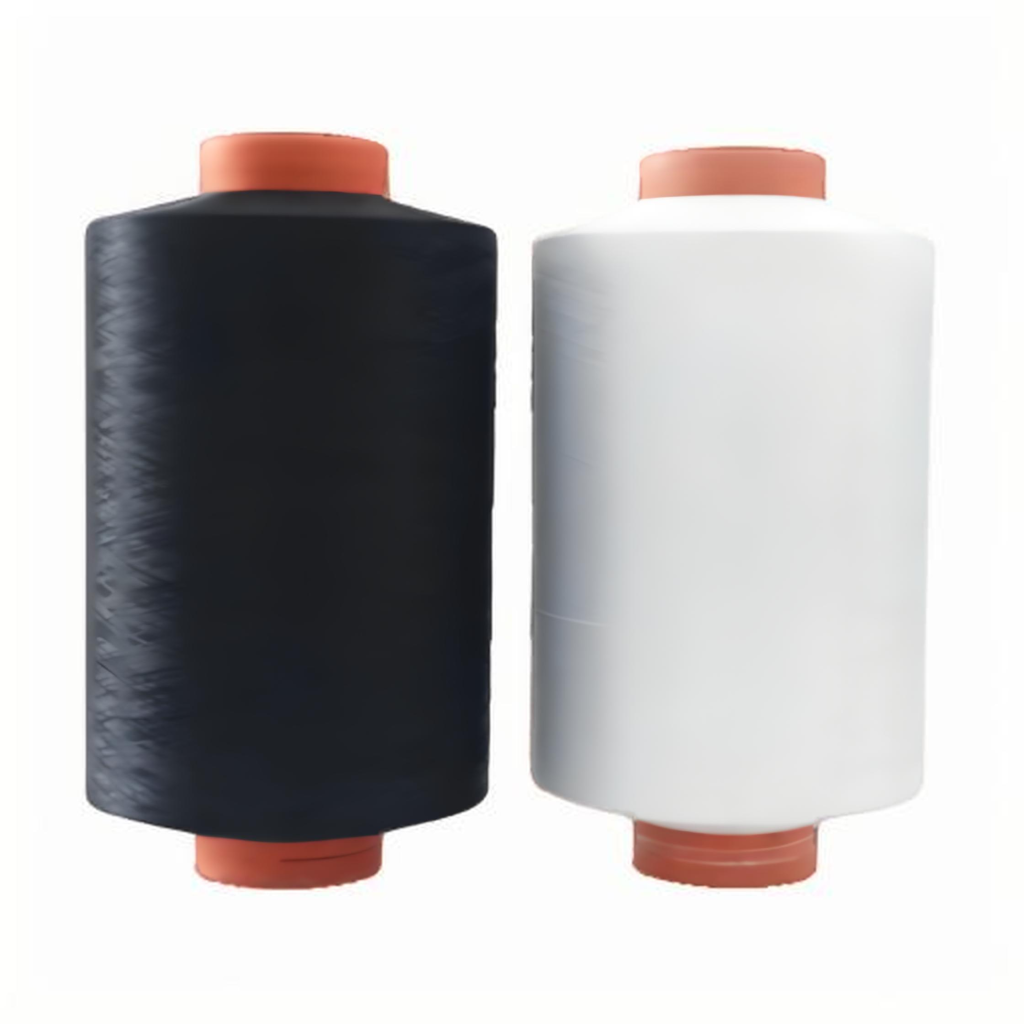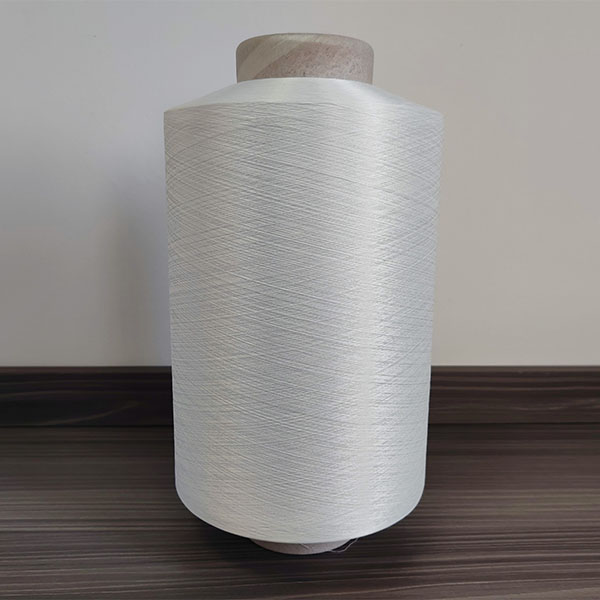Polyester Yarn Tariff Break: What It Means For Buyers - China Yarns Manufacturer And Supplier
Polyester yarn suppliers gain relief as the US cuts tariffs to 10% for 90 days. Explore impacts on wholesale polyester yarn prices & the textile supply chain.

Live updates on China-US trade
The Polyester Yarn Market Gets a Much-Needed Respite
The global polyester yarn industry has just received its most significant positive development in months. Following months of trade tensions that saw punitive tariffs reach an astonishing 145%, the United States government has announced a temporary suspension of 24% of these tariffs, leaving only 10% in place for the next 90 days. This dramatic policy shift comes as welcome relief for polyester yarn suppliers, manufacturers, and buyers across the international textile supply chain.
For industry stakeholders, this 90-day window represents a critical opportunity to recalibrate business strategies, secure favorable pricing, and stabilize supply chains that have been under tremendous pressure since the initial tariff announcements in April 2025. The timing couldn’t be more crucial – with the U.S. presidential election looming in November, many analysts predict this may be the last favorable trade policy adjustment we’ll see for some time.
Understanding the Tariff Rollback’s Immediate Impact
The immediate effects of this policy change are already rippling through global polyester yarn markets:
-
Price Adjustments: Wholesale polyester yarn prices have already begun adjusting downward, with preliminary reports showing 15-20% reductions from peak levels seen just last month.
-
Order Resumptions: Major U.S. apparel brands that had placed orders on hold are now reactivating contracts with their Chinese polyester yarn suppliers.
-
Supply Chain Reconfigurations: Logistics providers are scrambling to optimize shipping routes to take advantage of the temporary tariff relief.
-
Inventory Strategies: Smart buyers are looking beyond immediate needs to build strategic reserves before the window closes.
Deep Dive: The Tariff’s Market Impact and Why Compromise Was Inevitable
The 145% Tariff Shockwave (April 2025)
When the U.S. government initially imposed 145% tariffs on Chinese textile imports in April 2025, the polyester yarn market experienced immediate disruption:
Supply Chain Disruptions
-
Nearly 40% of pending orders were canceled or postponed within the first two weeks
-
Shipping containers filled with polyester yarn sat stranded at ports as buyers refused delivery
-
Many U.S. brands faced contractual penalties for failing to accept ordered goods
Price Volatility
-
Spot prices for premium polyester yarn varieties spiked by 60-80%
-
Long-term contract prices rose 25-35% as suppliers built in tariff costs
-
The price gap between Chinese and Southeast Asian polyester yarn narrowed dramatically
Retail Fallout
-
Major retailers like Walmart and Target reported 12-15% increases in apparel prices
-
Consumer demand softened as basic clothing items became more expensive
-
Inventory-to-sales ratios in the apparel sector reached dangerous lows
The Economic Realities That Forced Compromise
Several critical factors ultimately compelled U.S. policymakers to reconsider their aggressive tariff stance:
1. Supply Chain Dependencies
Despite years of “decoupling” rhetoric, the reality is that:
-
Vietnam imports over $3 billion worth of Chinese polyester yarn annually
-
Indian textile mills rely on Chinese inputs for 45% of their production
-
No alternative supplier can match China’s combination of scale, quality and price
2. Manufacturing Limitations
U.S. textile mills face multiple constraints:
-
Limited capacity for high-end polyester yarn production
-
Higher production costs (energy, labor, compliance)
-
Longer lead times compared to established Asian supply chains
3. Political Timetables
With the election approaching:
-
Rising consumer prices became a potent campaign issue
-
Retail industry lobbying efforts intensified
-
The administration needed tangible economic wins
4. Global Trade Dynamics
Concurrent developments included:
-
EU maintaining normal trade relations with China
-
Southeast Asian producers struggling with quality control
-
Shipping costs returning to pre-pandemic levels
Strategic Guidance for Polyester Yarn Buyers
Immediate Actions (First 30 Days)
1. Supply Chain Assessment
-
Conduct a comprehensive audit of current polyester yarn inventory
-
Identify critical shortages and vulnerable product lines
-
Map alternative supplier options as contingency
2. Supplier Re-engagement
-
Prioritize negotiations with your most reliable polyester yarn suppliers
-
Request updated price lists reflecting the tariff adjustment
-
Clarify production and shipping capacities
3. Order Optimization
-
Consider larger volume purchases to lock in favorable pricing
-
Balance immediate needs with strategic stock building
-
Evaluate Just-in-Time vs. safety stock approaches
Medium-Term Planning (30-60 Days Out)
1. Contract Renegotiation
-
Seek to extend payment terms where possible
-
Negotiate price adjustment clauses for future tariff changes
-
Secure capacity commitments for peak seasons
2. Quality Assurance
-
Implement enhanced inspection protocols
-
Request updated quality certifications
-
Conduct virtual or in-person factory audits
3. Logistics Planning
-
Book shipping capacity in advance
-
Explore multimodal transport options
-
Consider regional warehousing strategies
Long-Term Strategy Development
1. Supply Chain Diversification
-
Identify and qualify alternative polyester yarn suppliers
-
Consider near-shoring options in Mexico/Central America
-
Evaluate vertical integration opportunities
2. Product Innovation
-
Collaborate with suppliers on sustainable alternatives
-
Explore performance-enhanced yarn varieties
-
Develop proprietary blends for differentiation
3. Risk Management
-
Implement tariff hedging strategies
-
Build financial reserves for trade disruptions
-
Develop scenario planning capabilities
The Road Ahead: Polyester Yarn Market Projections
Post-90-Day Scenario Analysis
Optimistic Scenario (25% Probability)
-
Tariffs remain at 10% or are further reduced
-
Trade relations continue to improve
-
Market stability returns
Base Case Scenario (50% Probability)
-
Tariffs revert to pre-suspension levels
-
Limited new punitive measures
-
Gradual supply chain adaptation continues
Pessimistic Scenario (25% Probability)
-
Additional tariff increases implemented
-
Expanded product coverage
-
Accelerated decoupling efforts
Emerging Market Trends
1. Sustainability Focus
-
Growing demand for recycled polyester yarn (rPET)
-
Increased scrutiny of production environmental impact
-
Certification requirements multiplying
2. Technology Integration
-
Blockchain for supply chain transparency
-
AI-driven demand forecasting
-
Automated quality inspection systems
3. Regionalization
-
Near-shoring to Mexico for North American market
-
Turkey/Eastern Europe for EU customers
-
ASEAN production hubs for Asian demand
Conclusion: Turning Challenges Into Opportunities
The temporary tariff reduction presents the polyester yarn industry with a valuable opportunity to reset and prepare for whatever comes next. Smart companies will use this 90-day window to:
-
Strengthen Supplier Relationships – The best polyester yarn suppliers will prioritize partners who demonstrated loyalty during difficult times.
-
Optimize Inventory Positions – Strategic stock building now can provide competitive advantages later.
-
Enhance Supply Chain Resilience – Diversification and flexibility will be key to navigating future uncertainties.
-
Invest in Innovation – Product and process improvements can help offset potential future cost pressures.
For buyers currently facing polyester yarn supply challenges, the message is clear: act decisively during this window of opportunity. The most successful companies will be those that combine urgent action today with thoughtful planning for tomorrow’s uncertainties.
[Contact our polyester yarn sourcing specialists today] to discuss how we can help you navigate this dynamic market environment and secure your supply chain against future disruptions.
Previous News
Waxed Cotton Sewing Thread: GB/T 6836-2007 Requ...Next News
How Sewing Threads Are Classified in China: A G...
By Yarn
Feature Product
-
 DTY 100D/144F Polyester Yarn
DTY 100D/144F Polyester YarnDTY 100D/144F Polyester Yarn: The Ultimate Guid...
-
 DTY 100D/96F Polyester Yarn
DTY 100D/96F Polyester YarnDTY 100D/96F Polyester Yarn: The Soft, Stable S...
-
 DTY 75D/144F SIM Polyester Yarn
DTY 75D/144F SIM Polyester YarnDTY 75D/144F SIM Polyester Yarn: A Top Choice f...